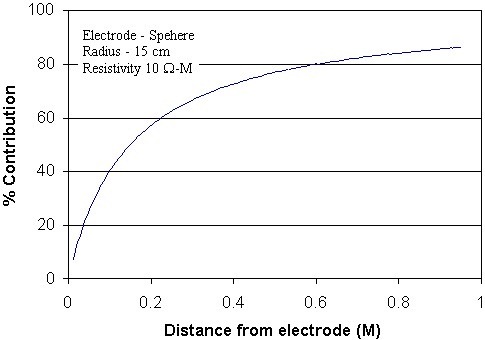On jobs where a building or structure.
Ground rod resistance requirement.
Grounding and bonding transient voltages and currents at data port or cable connections voltage difference.
Ground rod current source lightning average current 30 000 amps.
In practice for a residential structure most electricians place two ground rods and call it done.
The nfpa and ieee recommend a ground resistance value of 5 ohms or less while the nec has stated to make sure that system impedance to ground is less than 5 ohms specified in nec 50 56.
With this method the resistance of two electrodes in a series is measured by connecting the p1 and c1 terminals to the ground electrode under test.
Ideally a ground should be zero ohms of resistance but.
If this is the case for your ground rod the best solution is to drive a different rod into a different location.
I do not know of an equivalent requirement in the british standards.
P2 and c2 connect to a separate all metallic grounding point like a water pipe or building steel.
This does not create the best ground but it meets the bare minimum of the code.
Find out why the national electrical code 25 ohms or less rule may have less to do with power quality than you think.
This requirement clarifies that the supplemental electrode system must be.
In areas where driving ground rods may be impractical the two point method can be used.
Unfortunately there is not one standard ground resistance threshold recognized by all certifying agencies.
There is no requirement to retest the resistance.
For instance if a ground rod is driven into a very rocky and dry area it may not conduct electricity into the ground well.
Nearly all electricians and electrical inspectors are familiar with the national electrical code requirement in sec.
Resistance of a single ground rod exceeds 25 ohms to ground and the metal underground water line is the only other available electrode an additional electrode must be installed.
In some instances ground rods can be installed in areas where the earth has a lot of resistance.
250 54 which requires the resistance to ground of a single made electrode e g ground rod to be 25 ohms or less.
The nec and ul require a ground rod to be at least 8 feet in length.

